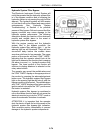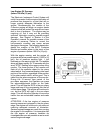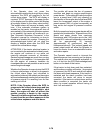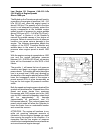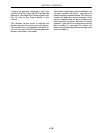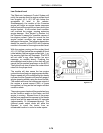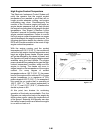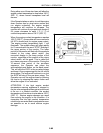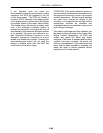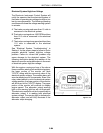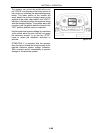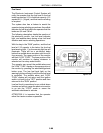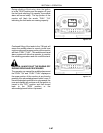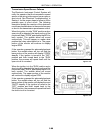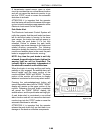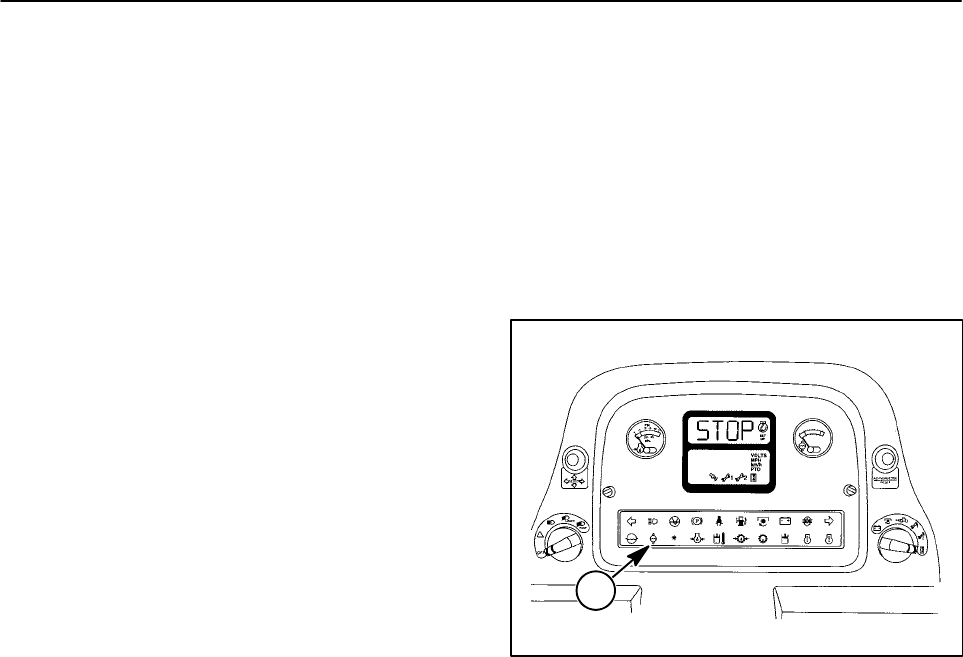
SECTION 2 - OPERATION
2-82
Doing either one of these two items will allow the
engine coolant temperature t o d rop below 106_C
(222_ F), where normal horsepower level will
resume.
If the Operator takesno action to cool the engine
down (reduce load or stop tractor motion and
run engine unloaded), the engine coolant
temperature will continue to increase. The
module will continue the proportional derate of
2% power decrease for each 1_C(1_ F) of
coolant temperature above 106_C (222_ F).
When the engine coolant temperature reaches
109_C (228_ F), the module will have reached a
full 20 % derate level for engine power output.
The engine coolant temperature light, 1, will
illuminate. The audible alarm will beep rapidly
for 10 seconds with the word “STOP” flashing in
the upper portion of the monitor. The lower
portion of the monitor will flash all of the symbols
related to the rotary select switch. Any
numerical display in the lower portion of the
monitor, regardless of the position of the rotary
select switch, will be gone. This is called the
pre--alarm sequence of the monitor. During the
10--second time period of the pre-alarm
sequence, the Operator can press the
acknowledge/reset button on the dash panel.
This will stop the EICS in the pre-alarm stage
and keep it from progressing into the full critical
alarm stage. The engine will continue to run, but
the EICS will stay in the pre-alarm stage. The
Operator can cool the engine down by reducing
the load or by stopping the tractor motion and
allow the engine to run unloaded.
ATTENTION: If the high engine coolant
temperature warning sequence is stopped in
the pre--alarm stage and theengine is continued
to be run in a loaded condition, the coolant
temperature will continue to raise above 109_C
(228_ F). Serious engine damage can result
from running the engine in this condition. It is
imperative that the high coolant temperature
condition be corrected and investigated as soon
as possible so as to avoid serious engine
damage.
1
Figure 2-112



